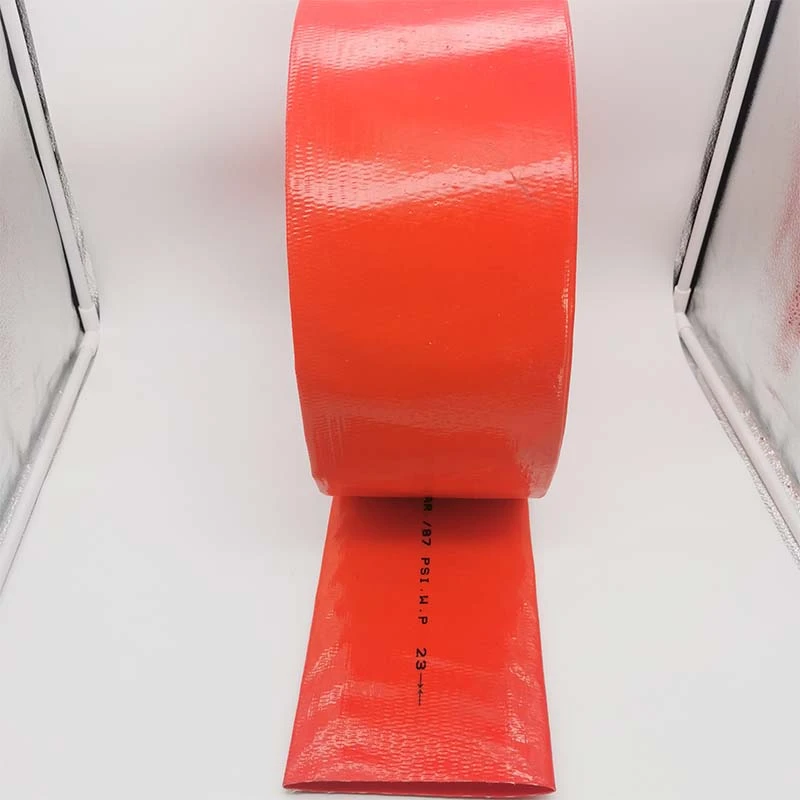Exploring the Benefits and Applications of Double Braided Hose in Various Industries
Double Braided Hose An Essential Component for Fluid Transfer
In the realm of industrial applications, the choice of hoses for fluid transfer is crucial for the integrity and safety of processes. Among the various options available, the double braided hose stands out due to its unique construction and performance characteristics. This article provides an in-depth look at double braided hoses, discussing their features, benefits, applications, and maintenance.
What is a Double Braided Hose?
A double braided hose consists of an inner tube reinforced with two layers of braided material. Typically, these hoses are made from high-quality synthetic rubber or thermoplastics, which are known for their excellent resistance to heat, chemicals, and abrasion. The braided layers, usually made from materials like nylon or stainless steel, are designed to provide additional strength and durability. This construction not only enhances the hose's ability to withstand high pressures but also assures flexibility, making it suitable for various applications.
Key Features
1. High Pressure Resistance Double braided hoses are engineered to withstand high-pressure environments due to the dual layer of braiding. This makes them ideal for applications that involve high-pressure fluid transfers, such as hydraulic systems and industrial pumps.
2. Flexibility Despite their strength, double braided hoses remain flexible, allowing them to be bent and routed as necessary without compromising the integrity of the lining. This feature is particularly advantageous in cramped or intricate installations.
3. Chemical Resistance Many double braided hoses are designed to handle a wide range of chemicals, including acids, bases, and solvents. This chemical resistance is vital in chemical processing industries where fluid compatibility is a critical factor.
4. Temperature Tolerance These hoses can operate under a wide temperature range, making them suitable for both hot and cold applications. This versatility expands their usability across different industrial sectors.
5. Abrasion Resistance The outer braid provides an additional layer of protection against physical wear and tear, which is essential in environments where hoses are subjected to rough handling or exposure to abrasive materials.
Benefits of Double Braided Hoses
The incorporation of double braided hoses brings several benefits to industrial processes. For starters, their robustness helps minimize the risk of leaks and failures, which can result in costly downtime and environmental hazards. Increased safety is another significant advantage, as the risk of hose rupture is considerably lower. Moreover, the flexibility and lightweight nature of these hoses contribute to easier installation and maintenance.
double braided hose

Additionally, double braided hoses often come with a longer service life compared to single-layer alternatives. The durability provided by the double braiding reduces the frequency of replacements, leading to lower long-term costs. Furthermore, many manufacturers offer customized double braided hoses tailored to specific application needs, which allows for greater operational efficiency.
Applications
Double braided hoses find applications in a variety of industries, including
- Hydraulic Systems The high-pressure capability of these hoses makes them ideal for hydraulic machinery, where fluid power is essential for operating equipment. - Chemical Processing In industries that deal with caustic substances, double braided hoses are invaluable for safe and reliable fluid transfer.
- Food and Beverage Some double braided hoses are designed with food-grade materials, ensuring compliance with health regulations while delivering liquids safely.
- Petrochemical Industry Their resistance to hydrocarbons and high temperature make them suitable for transporting fuels and other petrochemical products.
- Pharmaceuticals In the pharma sector, where hygiene and material compatibility are paramount, double braided hoses help ensure that processes are contaminant-free.
Maintenance
To ensure optimal performance and longevity, regular inspection of double braided hoses is essential. Users should check for signs of wear, abrasions, or leaks and replace any damaged sections promptly. Additionally, it is crucial to ensure that the hoses are not subjected to pressures beyond their rated specifications, as this could lead to premature failure.
Conclusion
In summary, double braided hoses are an invaluable asset in multiple sectors, providing reliable, high-performance solutions for fluid transfer. Their unique construction offers enhanced strength, flexibility, and resistance to harsh conditions, making them a preferred choice for many industrial applications. As industries evolve and demand continues to rise for efficient fluid handling solutions, double braided hoses will undoubtedly continue to play a critical role in ensuring safety and operational efficiency.
-
Unrivaled Performance and Applications of PU Pneumatic Hoses and TubesNewsJun.11,2025
-
The Transparent World of Industrial Tubing and Hosing SolutionsNewsJun.11,2025
-
The Intricate World of Pneumatic Conduits: Tubes and HosesNewsJun.11,2025
-
The Dynamic Landscape of Pneumatic Conduits: Unraveling Key ComponentsNewsJun.11,2025
-
The Diverse Applications and Significance of Transparent PVC TubingNewsJun.11,2025
-
High - Pressure Pneumatic Tubing and Systems: An In - Depth LookNewsJun.11,2025














